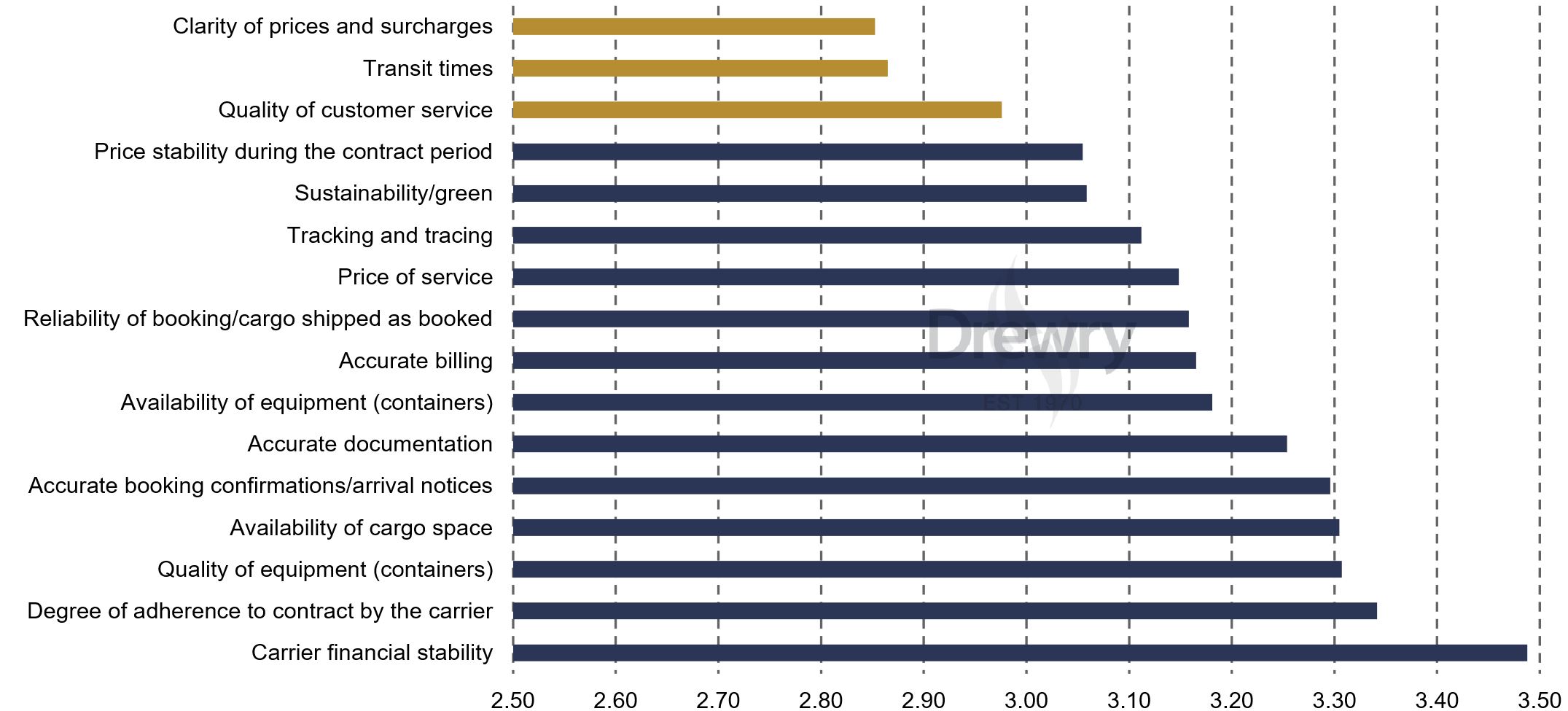Satisfaction Survey In Container Transport: Availability Of Cargo Space Now Number One Customer Requirement
Container shipping lines’ ability to provide cargo space as needed showed a marginal improvement in 2019, but this gain will have been dramatically reversed by the end of the first half of this year, according to the fourth annual shipper satisfaction survey of Drewry and the European Shippers’ Council (ESC).
The survey, run jointly by the ESC and Drewry, reveals that the 227 shippers and forwarders who took part rated the service of container shipping lines with an average score of 3.2 on a scale of 1 (very dissatisfied) to 5 (very satisfied).

The level of satisfaction for 16 different carrier service and cost criteria reviewed in the survey has been found to be diverse among respondents. Satisfaction with clarity of prices and surcharges, transit times and quality of customer service in 2019 ranked lowest – with scores of 2.8 to 3 (see chart below).
Satisfaction with availability of cargo space provided in 2019 ranked higher, at 3.3, and improved from 3.2 in 2018.
Availability of cargo space is now seen by shippers and forwarders as the most important criterion of carrier service, meaning that an improvement in cargo space availability in 2019 was a welcome development for the industry.
Based on the service you received from carriers in 2019, please tell us how satisfied you are with the carriers on average for each of the service and cost criteria from 1 (very dissatisfied) to 5 (very satisfied):
However, following the Coronavirus outbreak since February 2020, some 281 Asia-Europe and Asia-North America sailings have been cancelled and availability of cargo space has decreased dramatically.
“Drewry foresees that the next ESC-Drewry survey will show growing concerns among shippers for three specific areas of service quality: availability of space and equipment, reliability of bookings and carriers’ financial stability,” said Philip Damas, head of the logistics practice at Drewry.
“These are key factors of carrier and forwarder selection particularly in today’s disrupted market, but also in the next year as and when ocean-borne volumes recover,” he added.

“This is a market with volatile capacity where liners remain price setters and keep freight rates high, despite very low fuel indexes, whilst they can only plan in the short term themselves. Our view is that shippers will benefit from shorter-term contracts, and either by diversifying their carriers’ selection pool or by concentrating more on financially healthier or government supported carriers” said Godfried Smit, Secretary General of the European Shippers’ Council.
Please rank the following 16 carrier service and cost criteria from 1 (most important) to 16 (least important) using value (1-16) per line of reply (*please note this question is not mandatory):
Shippers and forwarders also said that carrier performance has deteriorated between 2018 and 2019 in four areas: the range of different available carriers, the range of different available services, the price of service and the overall carrier service quality. But carrier performance related to sustainability/green and carrier financial stability has improved since 2019, according to respondents.
Source: Drewry
Source: Drewry
No hay comentarios:
Publicar un comentario